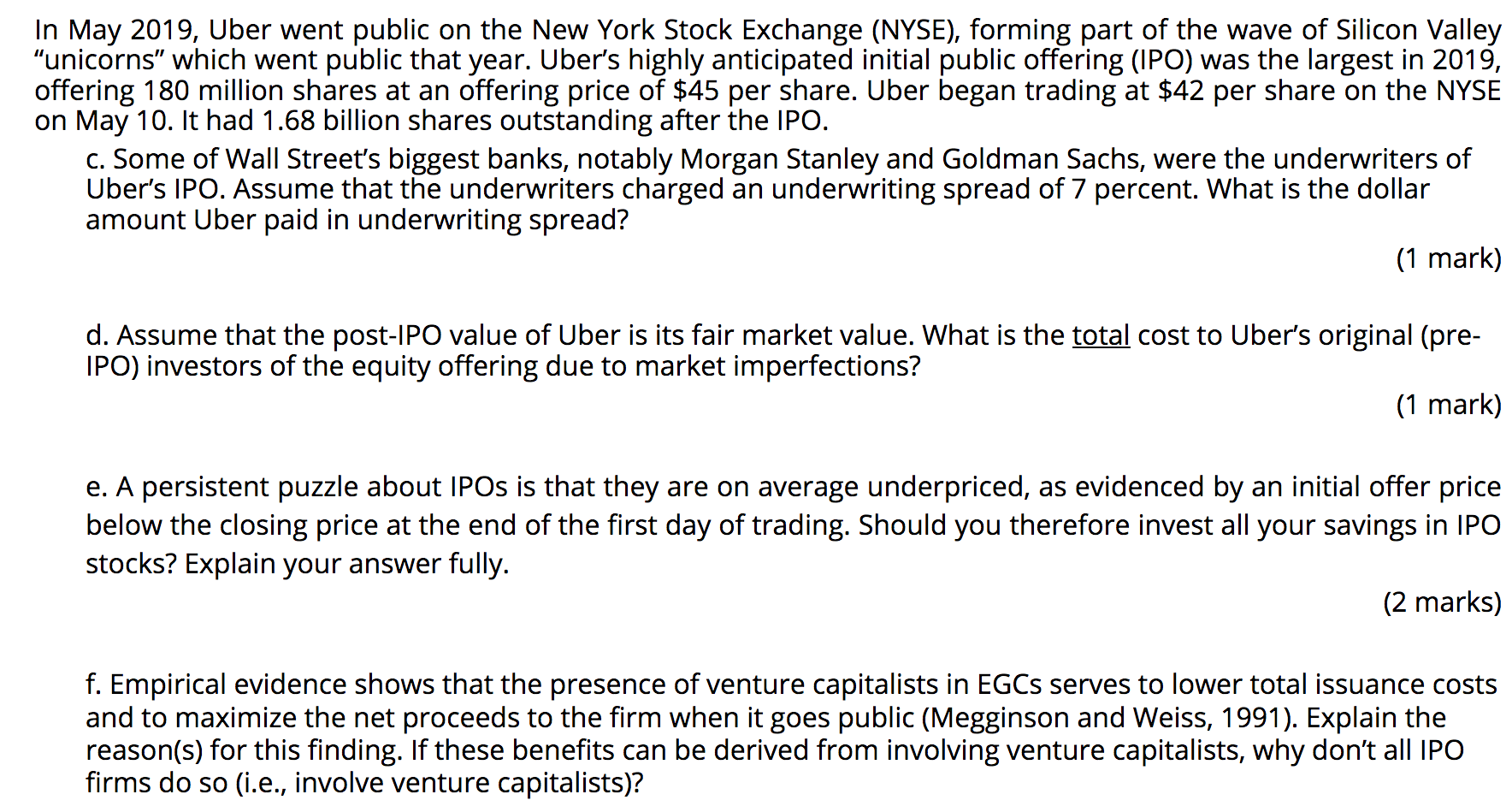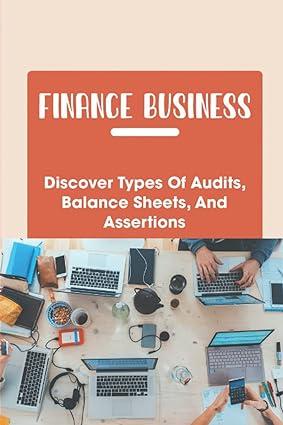
In May 2019, Uber went public on the New York Stock Exchange (NYSE), forming part of the wave of Silicon Valley unicorns" which went public that year. Uber's highly anticipated initial public offering (IPO) was the largest in 2019, offering 180 million shares at an offering price of $45 per share. Uber began trading at $42 per share on the NYSE on May 10. It had 1.68 billion shares outstanding after the IPO. C. Some of Wall Street's biggest banks, notably Morgan Stanley and Goldman Sachs, were the underwriters of Uber's IPO. Assume that the underwriters charged an underwriting spread of 7 percent. What is the dollar amount Uber paid in underwriting spread? (1 mark) d. Assume that the post-IPO value of Uber is its fair market value. What is the total cost to Uber's original (pre- IPO) investors of the equity offering due to market imperfections? (1 mark) e. A persistent puzzle about IPOs is that they are on average underpriced, as evidenced by an initial offer price below the closing price at the end of the first day of trading. Should you therefore invest all your savings in IPO stocks? Explain your answer fully. (2 marks) f. Empirical evidence shows that the presence of venture capitalists in EGCS serves to lower total issuance costs and to maximize the net proceeds to the firm when it goes public (Megginson and Weiss, 1991). Explain the reason(s) for this finding. If these benefits can be derived from involving venture capitalists, why don't all IPO firms do so (i.e., involve venture capitalists)? In May 2019, Uber went public on the New York Stock Exchange (NYSE), forming part of the wave of Silicon Valley unicorns" which went public that year. Uber's highly anticipated initial public offering (IPO) was the largest in 2019, offering 180 million shares at an offering price of $45 per share. Uber began trading at $42 per share on the NYSE on May 10. It had 1.68 billion shares outstanding after the IPO. C. Some of Wall Street's biggest banks, notably Morgan Stanley and Goldman Sachs, were the underwriters of Uber's IPO. Assume that the underwriters charged an underwriting spread of 7 percent. What is the dollar amount Uber paid in underwriting spread? (1 mark) d. Assume that the post-IPO value of Uber is its fair market value. What is the total cost to Uber's original (pre- IPO) investors of the equity offering due to market imperfections? (1 mark) e. A persistent puzzle about IPOs is that they are on average underpriced, as evidenced by an initial offer price below the closing price at the end of the first day of trading. Should you therefore invest all your savings in IPO stocks? Explain your answer fully. (2 marks) f. Empirical evidence shows that the presence of venture capitalists in EGCS serves to lower total issuance costs and to maximize the net proceeds to the firm when it goes public (Megginson and Weiss, 1991). Explain the reason(s) for this finding. If these benefits can be derived from involving venture capitalists, why don't all IPO firms do so (i.e., involve venture capitalists)







